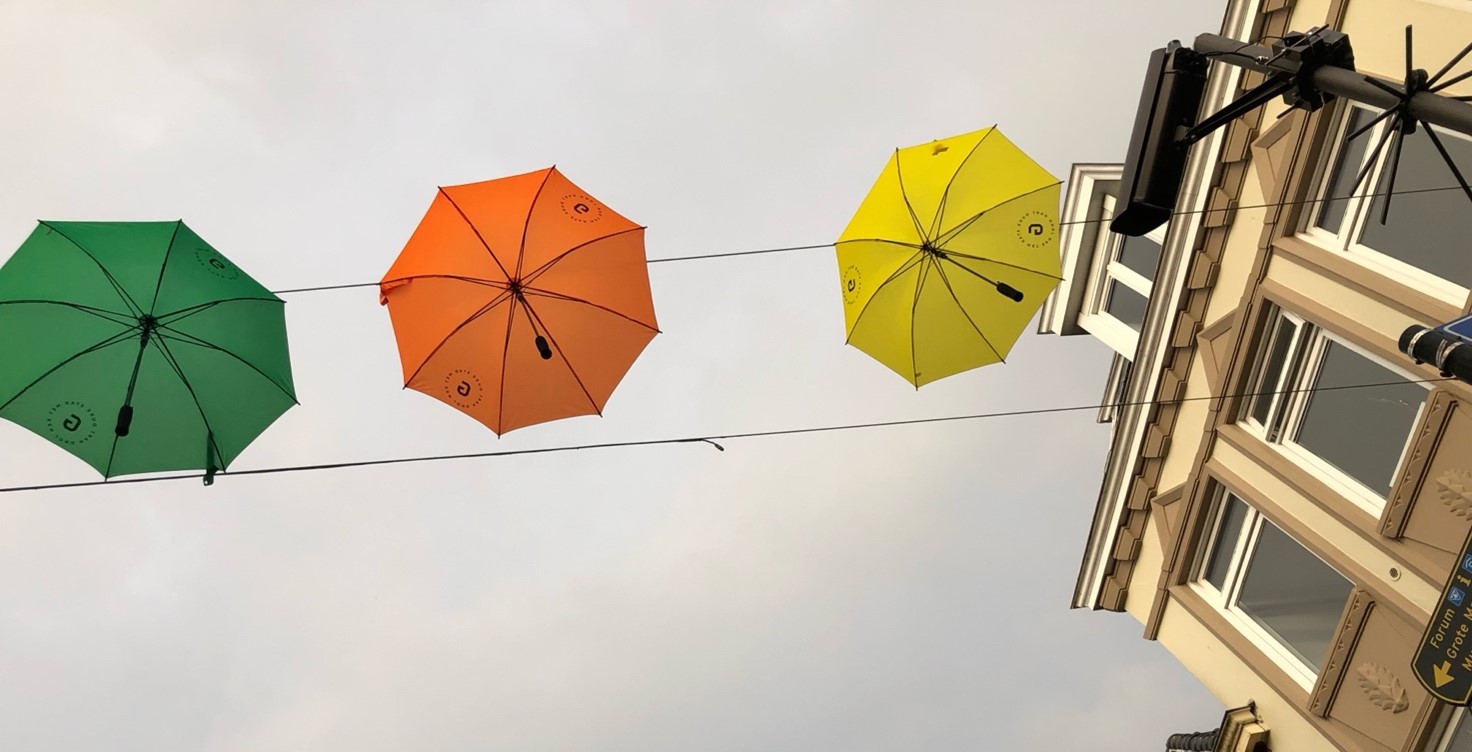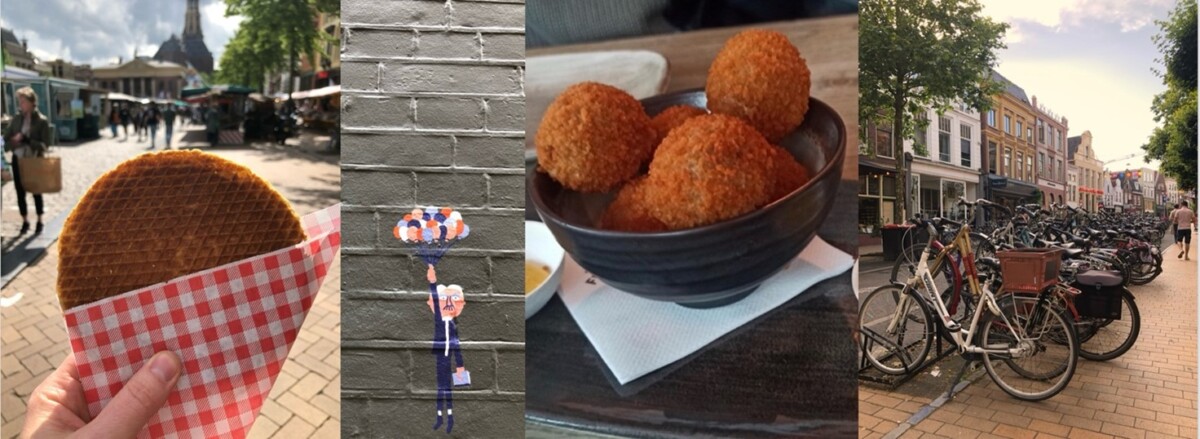
Savonia Article: Experiences from the summer school in Netherland
This work is licensed under CC BY-SA 4.0
It was a pleasure to participate in a summer school organized by Hanze University of Applied Sciences on the theme of Future Health. The summer school is a three-week course of study in which Savonian students participated for the first week. A total of 30 students from different countries such as the United States, Canada and of course Finland participated in the summer school. The summer school was coordinated by four teachers from Hanze-UAS, Gronigen Netherland and included teachers from the United States, Canada, and Finland. For the Finnish students the summer school was part of the working and studies in international environment course.
The theme of the summer school was health for the future. Major health problems are being tackled all over the world. The population is ageing globally, technology is advancing, and our understanding of the human body is increasing. This puts pressure on health systems in all countries to deliver services of high quality and excellence. At the same time raises the question: how can we ensure that we stay healthy for longer to reduce the strain on health systems? This theme was addressed by describing the social and health care systems in different countries. Finnish students gave a description of our current welfare areas and the services they provide and they description of occupational health care and rehabilitation from Finland.
In summer school in Groningen, we participated in many interesting lessons with international students. We learned for example about TOPOI model, Health Literacy, Sustainable Development Goals, and many others. We are representing here a few of them, which we consider important.
How well do we understand each other while we communicate?
The TOPOI model was developed by Edwin Hoffman to investigate differences in communications. Hoffman referred to this difference as” communication noise”. While communicating, we are constantly influencing one another and there is a power to change these influences if we are aware of them. The figure below (Figure 1.) shows meanings of the letters and the different dimensions of communications. (Hoffman 2024.)

We hadn’t heard about the TOPOI model before, and we found it interesting and an important thing to understand. This model is useful for example in organizations which includes many different fields and professionals to collaborate. Everyone may have different habits and ways of thinking and there is a risk of misunderstandings because of that. It is also useful in international environments to help understand each other when communicating. Concentration in communication and its cultural dimensions is becoming more important also in Finland when we have more immigrants and employees who come from different cultures.
The TOPOI model is used to analyze communication, and it is a tool to detect possible misunderstandings and conflicts during and after conversation. The model is based on the assumption that communication is universal, and the emphasis is on interaction. Culture means the patterns of behaving and thinking, that we have learned, that we are familiar with and that we share with others in our community. Culture belongs to a group or society, and it is something that we learn. There are different dimensions of culture, some of them are more visible than others. (Digipass 2023.)
When we are communicating with patients or co-workers, we need to pay attention to other people’s reactions and ask ourselves, what are we doing to make the other person react this way or what is the other person doing to make me react in this manner? What is the influence of social context in the way we react to one another? (Digipass 2023.) These things matter more than we may even understand. TOPOI model can help us to understand each other better and avoid misunderstandings.
What is health literacy?
Health literacy involves the knowledge, motivation, and skills to access, understand, appraise, and apply health information to make decisions about healthcare, disease prevention and health promotion (Sorensen et al 2012).
Low health literacy is linked to poorer health outcomes, higher hospitalization rates, and increased use of emergency departments for primary care (Hickey et al 2018). People with low skills have trouble reading health documents and guidances which may lead to the fact that they aren’t able to cope with their health issues. For example, they don’t understand the essence of their medication.
In Finland the Finnish school system gives everyone basic literature skills. Finnish people can read and write, but the ability to understand the context of the written information varies through one’s education levels, interests and involvement.
Health care information is overwhelming. Almost every day you find articles in the evening newspapers regarding health. Some of them are based on professional articles meanwhile some don’t have any reasonable or knowledge-based facts. They are just something to attract readers. One must be able to handle the information critically and sometimes information gathered from healthcare professionals does not meet one’s needs or hopes. That leads to the fact that people don’t necessarily follow the instructions.
Everyone with long term illness should have a healthcare companion walking on their side to make sure they understand and follow the instructions. They should be given understandable and reasonable guidance through conversation not just written one. Instructions should be given in their own language avoiding medical terminology.
Even healthcare professionals have difficulties understanding one another as medical terminology is highly specialised depending on the expertise field. E.g. neurological terminology is highly specified, one professional word defines a variety of symptoms. Translation to everyday language needs a long defining explanation.
Future of our planet and well-being: Sustainable Development Goals
One interesting theme highlighted during the lectures of the summer school was Sustainable Development Goals, SDGs. This theme was also visibly on display in the corridors of Hanze UAS, as seen in Picture 1.

In 2015, the United Nations released the 2030 Agenda for Sustainable Development to promote prosperity while protecting the planet (UN 2015). This Agenda includes 17 specific goals to guide the way towards a better and more sustainable future for all (UN 2015). Being this way highlighted, it was obvious that SDGs have lots to do also with the future of health, not only along with specific health related goals, because the future of our planet and humankind depends on development of all sectors. For us, the theme was unfamiliar and when raised up this way, we realized that SDGs are not that visibly included on the curriculums in health care and rehabilitation education in Finland.
This is not so surprising, as resent study of the engagement of higher education institutions in the implementation of SDGs indicates that more attention should be paid to including SDGs in teaching curricula and research projects both in developing and developed countries. SDGs are already recognized as an opportunity to increase collaboration within the university and between different universities. (Leal Filho 2023.)
Higher education institutions could increase their commitment to implement SDGs by increasing sustainability research and adding those in teaching by including sustainability-related topics in curriculums. There are also different ways to promote implementation of the SDGs: collaboration across university units, networking across universities (both national and international) and collaboration among HEIs with local communities, businesses and NGOs. (Leal Filho 2023.)
Even though SDGs aren’t that visibly included in health care education curriculums in Finland, we are on the good road with many of the goals as a society. We have strong institutions, well known peace negotiators, our education system highly recognized, recycling is strictly regulated everyday action, and we are working hard to develop cleaner energy resources. In addition to these we do have specific education programs for sustainable development. Nevertheless, there is still lots to do in the global frame of reference, and these goals need to be better publicized in general in our society – also in higher education institutions and in every field of study.
Conclusions for international week in Groningen: Studying, learning and having nice time
During our week in Groningen, we got a glimpse of Dutch lifestyle: taste of bitterballen and stroop waffell, changeable weather, overflowing bicycle traffic and easygoing attitude. Some of these things are seen in Picture 2. The summer school program included also fieldtrips to local health care units, i.e. healthcare farm, emergency care and mental healthcare unit. Unfortunately, all the field trips were scheduled on the second week of summer school, and we were not able to participate in those. It would have been specially interesting to visit local rehabilitation center and see how the courses of action depart from Finnish practices.

(Photo © 2024 by Minna Rutanen is licensed under CC BY-NC-ND 4.0)
Altogether, we spent an interesting week in Netherland thanks to Erasmus+ student exchance programme and we can recommend this experience for everyone interested in internationalization and travelling. The week was a nice combination of studying and leisure time. It made us also realize that we get along quite well in foreign language, and we got encouraging feedback of our English skills from native speakers. Similarities between Finnish and Dutch societies make everyday life, studying and travelling rather easy – just remember keep quiet in silent carriages in trains and watch out the bicycles and everything’s going to be fine.
Authors:
Mari Pitkänen, Minna Rutanen, Minna-Mari Uusitalo (students in Master’s degree program of rehabilitation) and Marja Äijö (Principal lecturer), Savonia University of Applied Sciences
References:
Digipass 2023. TOPOI method. https://www.digi-pass.eu/ST-Culture-How-to. Referred 23.6.2024.
Hickey Kathleen T, Masterson Creber Ruth M, Reading Meghan, Sciacca Robert R, Riga Te-resa C, Frulla Ashton P, Casida Jesus M. 2018. Low health literacy: Implications for man-aging cardiac patients in practice. Nurse Pract. 2018 Aug;43(8):49-55. doi: 10.1097/01.NPR.0000541468.54290.49. PMID: 30028773; PMCID: PMC6391993. https://www.ncbi.nlm.nih.gov/pmc/articles/PMC6391993/
Hoffman, Edwin 2024. Inclusive communication and TOPOI-model. https://www.researchgate.net/publication/379815719_Inclusive_communication_Edwin_Hoffman?enrichId=rgreq-f2484ee2419b0adab64b8b218d1a2e5f-XXX&enrichSource=Y292ZXJQYWdlOzM3OTgxNTcxOTtBUzoxMTQzMTI4MTIzNjMwODI1M0AxNzEzMTMxMDk0MTM5&el=1_x_2&_esc=publicationCoverPdf. Referred 23.6.2024.
Leal Filho, W, Lange Salvia, A. & Pires Eustachio, J. H. P. 2023. An overview of the engagement of higher education institutions in the implementation of the UN Sustainable Development Goals. Journal of Cleaner Production, Vol 386, 2023,135694, ISSN 0959-6526,
https://doi.org/10.1016/j.jclepro.2022.135694. https://www.sciencedirect.com/science/article/pii/S0959652622052684 Referred 16.6.2024
Sorensen, Kristine, Van den Broucke, Stephan, Fullam, James, Doyle, Gerardine, Pelikan, Jur-gen, Slonska, Sofia, Brandt, Helmut & (HSL-EU) Consortium Health Literacy project European 2012. Health literature and public health: A systematic review and integration of definitions and models. BMC Public Health 12,80. https://bmcpublichealth.biomedcentral.com/articles/10.1186/1471-2458-12-80#citeas
The United Nations 2015. Transforming our world: the 2030 Agenda for Sustainable Develop-ment. A/RES/70/1. https://sustainabledevelopment.un.org/content/documents/21252030%20Agenda%20for%20Sustainable%20Development%20web.pdf?_gl=1*1tg7gaf*_ga*ODE0MDkxMzI2LjE3MTgwMzcyMDQ.*_ga_TK9BQL5X7Z*MTcxODQzMTk5Ni4zLjEuMTcxODQzMjMxMC4wLjAuMA. Referred 16.6.2024